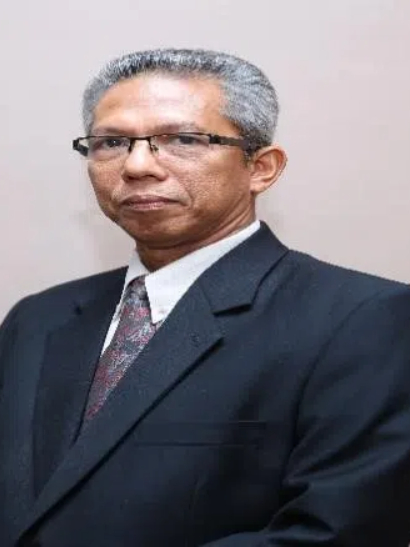 Prof. Lazim Abdullah
Prof. Lazim Abdullah
Universiti Malaysia Terengganu, Malaysia
Lazim Abdullah is a Professor of Computational Mathematics
at the Faculty of Computer Science and Mathematics,
Universiti Malaysia Terengganu. He received his Ph.D
(Information Technology) from the Universiti Malaysia
Terengganu, in 2004. His research and expertise focus on
fuzzy set theory of mathematics, decision making models,
applied statistics, and their applications to environment,
health sciences and technology management. His research
findings have been published in more than 395 publications
including refereed journals, conference proceedings,
chapters in book, monographs, and textbooks. He has been
ranked among the world’s top 2% scientists by Stanford
University in the field of artificial intelligence and image
processing since 2018. Prof Lazim is a member of the IEEE
Computational Intelligence Society, and a member of
International Society on Multiple Criteria Decision Making.
Speech Title: An Integrated Bipolar Fuzzy-DEMATEL for Elucidating Factors Influencing Customers Choice: A Case of Life Insurance Companies
Abstract: Multi-criteria decision-making (MCDM) methods have
gained substantial traction across various scientific
disciplines, with the Decision-Making Trial and Evaluation
Laboratory (DEMATEL) method being particularly prominent.
This study advances the DEMATEL framework by incorporating
bipolar fuzzy sets to better handle complex, uncertain
decision environments. The primary objectives are twofold:
(1) to propose an integrated Bipolar Fuzzy-DEMATEL model and
(2) to apply the model to identify key factors influencing
customer choice in life insurance companies. The model
introduces a novel linguistic scale for bipolar fuzzy sets,
allowing simultaneous evaluation of positive and negative
membership degrees across truth, falsity, and uncertainty
dimensions. A sensitivity analysis was also conducted to
assess the robustness of the findings. Results indicate that
the cause factors influencing customer choice include F1,
F2, F7, F8, and F9, while F3, F4, F5, F6, and F10 are
classified as effect factors. Among them, ‘F2|: Competitive
pricing and clear terms’ emerged as the most influential.
The sensitivity analysis confirmed the model’s robustness,
showing minimal impact of weight variations on factor
rankings. The stability of top-ranked factors under changing
conditions highlights the model’s reliability and its
practical relevance for strategic decision-making in the
insurance sector.
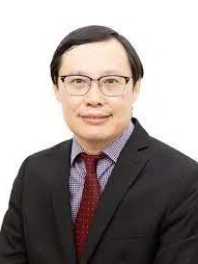 Assoc. Prof. Kezhi Mao
Assoc. Prof. Kezhi Mao
Nanyang Technological University, Singapore
Mao Kezhi obtained his BEng, MEng and PhD from Jinan
University, Northeastern University, and University of Sheffield
in 1989, 1992 and 1998 respectively. He is now an Associate
Professor at School of Electrical and Electronic Engineering,
Nanyang Technological University, Singapore. His research covers
a couple of subfields of artificial intelligence (AI), including
machine learning, computer vision, natural language processing,
and information fusion. Over the past 25 years, he has developed
novel algorithms and frameworks to address various issues in the
field of artificial intelligence. He has published over hundred
research papers on top journals and conferences, which have
received 10000+ citations (Google Scholar).
As a strong advocate of translational research, he has
collaborated with government agencies and hospitals and
developed a couple of prototypes of AI systems for image
processing and natural language processing. He served as
consultant for a number of companies such as Deloitte & Touche,
ST Engineering, Zhuyi Technologies, and Rakuten Group etc,
advising on R&D of AI and machine learning.
He now serves as Member of Editorial Board of Neural Networks,
Academic Editor of Computational Intelligence and Neuroscience,
and General Chair, General Co-Chair, Invited Panelist, and
Invited Speaker of a number of international conferences.
Speech Title: Large Language Model (LLM) Pruning and
Restoration
Abstract: Large language models (LLMs) such as GPT have
demonstrated remarkable capabilities in reasoning, problem
solving, and conversation. However, their size and computational
requirements make them difficult to run outside of powerful data
centers. This talk explores how pruning and restoration
techniques are helping to address this challenge.
Pruning involves carefully removing unnecessary parts of a model
to reduce its size and speed up performance, while restoration
methods help the model regain accuracy and reliability after
pruning. The talk will provide a comprehensive overview of how
pruning and restoration techniques can enable scalable,
efficient, and high-performing LLMs for next-generation AI
systems.
We will discuss structured and unstructured pruning approaches,
including weight pruning, neuron pruning, and layer-wise
optimization, alongside novel restoration strategies to recover
model accuracy.
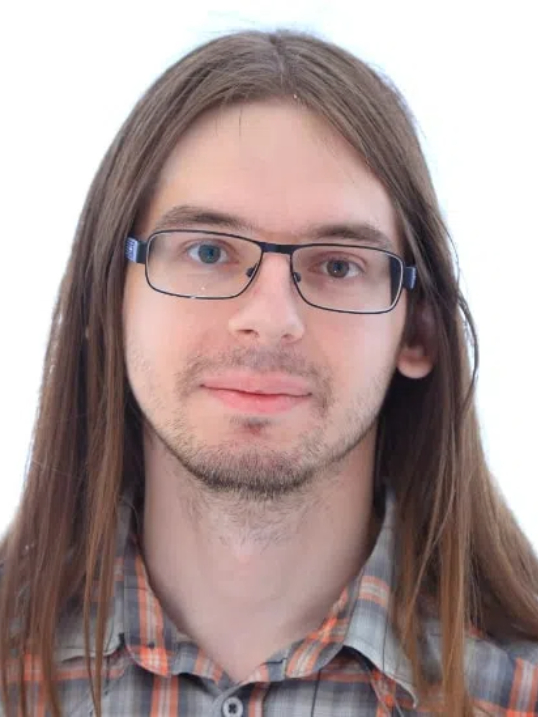 Assoc. Prof. Marko Đurasević
Assoc. Prof. Marko Đurasević
University of Zagreb, Croatia
Marko Đurasević is an Associate Professor at the Faculty of
Electrical Engineering and Computing (FER), University of
Zagreb. His research is centered on evolutionary computation,
particularly genetic programming and hyper-heuristics for
solving complex scheduling and optimization problems. He earned
his Ph.D. in Computer Science from FER in 2018, with a
dissertation focused on the automated design of dispatching
rules in unrelated machines environments.
Dr. Đurasević has published over 100 scientific papers in
international journals and conferences, contributing extensively
to the fields of combinatorial optimization, machine learning,
and soft computing. He is the principal investigator of two
nationally funded projects dealing with optimization of
containers in ports and routing of electric vehicles.
Furthermore, he also leads a project in collaboration with the
company AVL-AST.
His scientific excellence has been recognized with the Annual
Award for Young Researchers by the Croatian Parliament in 2023
and several other national institutions. Dr. Đurasević is an
active member of IEEE, IEEE CIS, ACM, and ACM SIGEVO, and
regularly serves as a reviewer for leading journals in
artificial intelligence and operations research.
Speech Title: Using Genetic Programming to Automatically Design Heuristics for the Electric Vehicle Routing Problem
Abstract: The vehicle routing problem (VRP) is a famous
combinatorial optimization problem commonly encountered
in various real-world logistics processes. The goal of
the problem is to determine the best possible routes for
a given number of vehicles, such that all the customers
are visited and served, and that one or more user
defined criteria are optimised. Due to this reason, VRP
has been tackled by various researchers to propose
methods that can effectively solve this problem.
However, in recent years, due to the growing
environmental concerns that arise due to the negative
influence of people on the environment, the electric VRP
(EVRP) variant became increasingly popular and
extensively researched in the literature. In this
problem, the fleet is made up only of electric vehicles,
which additionally complicates the problem. The reason
for this is that electric vehicles usually have a
limited range and also that recharging the battery takes
a significant amount of time. Due to this reason, it
becomes even more so important to obtain efficient
routes for visiting all the customers. However,
obtaining solutions for large or dynamic problems is
difficult, as not all information about the problem is
known beforehand. Therefore, it is required to use
simple constructive heuristics methods, which
incrementally construct the solution to such problems.
In that way, these heuristics can quickly react to the
changing conditions of the problem by always taking into
account the latest available information. However,
designing such heuristics is quite difficult, and
usually requires a good understanding of the problem and
domain. Even more, since there are numerous problem
variants and criteria that need to be considered, it is
difficult to design heuristics for each problem variant.
For that reason, in recent years, genetic programming
(GP) has been commonly used to automatically design
heuristics for a wide range of problems, including EVRP.
In the context of designing heuristics, GP can be used
to create an arbitrary expression that can be used rank
all the decisions in the system. Based on these rankings
the heuristics can then select the most appropriate
decision and execute it. This possibility of designing
an arbitrary expression to rank the decisions that need
to be performed allows GP to design heuristics for
almost any problem variant or optimization criterion
that is considered, thus relieving human experts of the
tedious task of having to manually design such
heuristics manually. The initial results demonstrate
that by using such an approach it is possible to achieve
improved performance in comparison to manually designed
rules. This outlines the potential of this approach to
design high quality heuristics that can not only match
but also outperform human made heuristics.
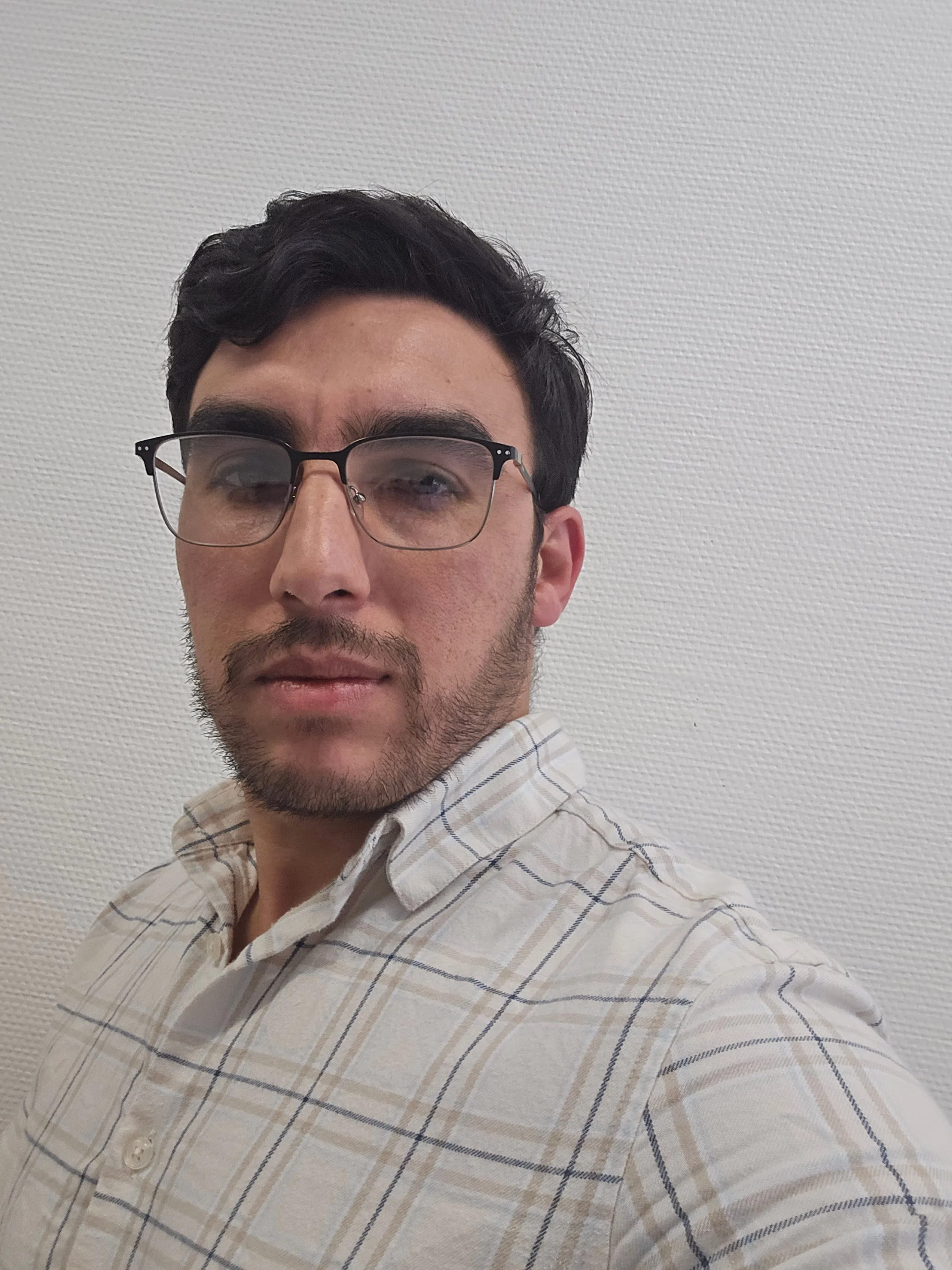 Assoc. Prof. Mahdi Madani
Assoc. Prof. Mahdi Madani
Université Bourgogne Europe, France
Mahdi Madani received his Ph.D. in Electronics Systems from
the University of Lorraine on July 12, 2018. He was a temporary
research and teaching associate at IUT Auxerre, University of
Burgundy, from September 2018 to August 2020, and he was also a
temporary researcher at IETR laboratory and teaching associate
at IUT Nantes from September 2020 to August 2022. In September
2022, he joined the Université Bourgogne Europe and the CORES
team in the IMVA laboratory for the associate professor
position. His research interest is information security in new
digital networks, algorithm-architecture suitability, FPGA, and
SoC implementation of complex algorithms, applying security
techniques (confidentiality, integrity, encryption, chaotic
systems, etc.) to image, signal, and vision applications, and
exploring artificial intelligence packages for data and privacy
preserving.
Speech Title: Secure and Efficient Tele-Radiography
Based on the Fusion of a Convolutional Autoencoder and Chaotic
Latent Encryption
Abstract: This work addresses the dual challenges of
efficient compression and secure transmission for medical
images, particularly in bandwidth-constrained telemedicine
scenarios like tele-radiography. We proposed an end-to-end
pipeline combining deep learning-based compression with
chaos-based encryption. A convolutional autoencoder (CAE),
optimized with a Structural Similarity Index Measure (SSIM) loss
function and incorporating residual connections and batch
normalization, achieves an 8:1 (87.5%) compression ratio on
Chest X-ray images while maintaining a high fidelity of 96% SSIM
and 36 dB Peak signal-to-noise ratio (PSNR). To secure the
compact latent representation generated by the CAE, we introduce
a lightweight, chaos-based encryption scheme operating directly
on the latent space. This scheme utilizes a logistic map for
confusion and secure permutations for diffusion. The
experimental results confirm the effectiveness of the
compression module in preserving high-frequency details and the
encryption scheme’s resistance against statistical attacks, by
achieving high entropy (7.92), strong randomness (0.99),
correlation (close to 0 in horizontal, vertical, and diagonal
directions), and very sensitive to small changes in the key (1
single bit change conduct to a completely different keystream).
Our work offers a promising solution for secure and efficient
medical image transmission over constrained networks.
 Assoc. Prof. Maciej Kusy
Assoc. Prof. Maciej Kusy
Rzeszow University of Technology, Poland
Maciej Kusy received his MSc degree in Electrical
Engineering from the Rzeszów University of Technology, Poland,
in 2000; his PhD in Biocybernetics and Biomedical Engineering
from the Warsaw University of Technology, Poland, in 2008; and
his DSc in Information and Communication Technology from the
Systems Research Institute of the Polish Academy of Sciences,
Warsaw, Poland, in 2019. He is currently an Associate Professor
at the Faculty of Electrical and Computer Engineering, Rzeszów
University of Technology. His research interests focus on
artificial intelligence, particularly machine learning,
generative learning, data mining, and video/image processing.
Speech Title: Task-Focused Label Selection for Improving YOLO Performance in Video Detection
Abstract: The talk will focus on enhancing urban scene
datasets by introducing critical object categories through the
use of an open-vocabulary detection model. This innovation
enables automatic annotation, eliminating the need for manual
labelling and allowing fine-tuning of real-time detection
models. To simplify the training process and improve model
performance, static or less informative categories are
selectively excluded. This targeted approach addresses class
imbalance by prioritising task-relevant elements, even when they
are underrepresented in the dataset. Through prompt-guided
detection and efficient annotation conversion, the model is
trained on a reduced label set. Evaluation results demonstrate
consistent precision, stable or improved accuracy, and minimal
recall drops for certain categories — illustrating the
effectiveness of a simplified and focused labelling strategy.
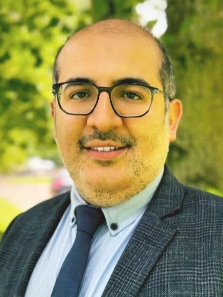 Dr. Amir Hajiyavand
Dr. Amir Hajiyavand
University of Birmingham, UK
Dr. Amir Hajiyavand holds both a Master of Engineering
(MEng) degree in Mechanical Engineering (biomedical) and a PhD
in Robotics from the University of Birmingham, United Kingdom.
He is currently an academic at the Institute of Robotics within
the School of Engineering at the University of Birmingham.
His research focuses on the design and development of advanced
automated systems and robotic solutions, with a particular
emphasis on integrating Artificial Intelligence (AI) for
applications spanning healthcare and the Circular Economy. Dr
Hajiyavand possesses substantial expertise in industrial
automation, robotic inspection, and robotic manipulation,
including high-precision micromanipulation techniques.
With extensive experience in advancing innovative technologies
from lower Technology Readiness Levels (TRLs) through to
deployment at high TRLs, he has established active
collaborations with a wide range of industrial partners and
academic institutions worldwide. His work contributes
significantly to the advancement of automation, robotics, and
AI-driven systems, aiming to enhance the efficiency, precision,
and adaptability of robotic platforms for both industrial and
scientific applications.
Speech Title: Beyond the Scalpel: Automation as Healthcare’s New Cutting Edge — Challenges and Opportunities
Abstract: Automation is transforming healthcare,
fundamentally shifting how care is delivered, managed, and
experienced. Robotic-assisted surgery, AI-enabled diagnostics,
automated laboratory workflows, and remote patient monitoring
now form an integrated continuum of technological interventions
that promise enhanced efficiency, accuracy, and scalability
within clinical practice. Yet, whilst these developments
demonstrate significant opportunities for improved care, their
integration also presents complex technical, regulatory, and
operational challenges.
This keynote will examine the adoption of automation within
healthcare. It will consider the evolution of advanced automated
solutions from concept through to deployment, highlighting the
barriers encountered along the development pathway. Drawing upon
real-world examples and cross-disciplinary research, it will
demonstrate how automation can be strategically implemented to
increase throughput, reduce error, and enhance patient outcomes.
Beyond technical considerations, this talk will address wider
implications including data privacy, cybersecurity, workforce
transformation, and the critical need for interoperability
across systems. It will emphasise that successful adoption
depends upon collaboration among engineers, clinicians, computer
scientists, and information technology experts.
Finally, the session will situate healthcare automation within
the broader context of industrial transformation, underscoring
persistent challenges such as regulatory complexity, integration
barriers, and the growing imperative for trust and transparency
in AI-supported decision-making. The session will provide
insights into deploying automation not simply as a tool for
operational efficiency, but as a catalyst for systemic
improvement in modern healthcare.
